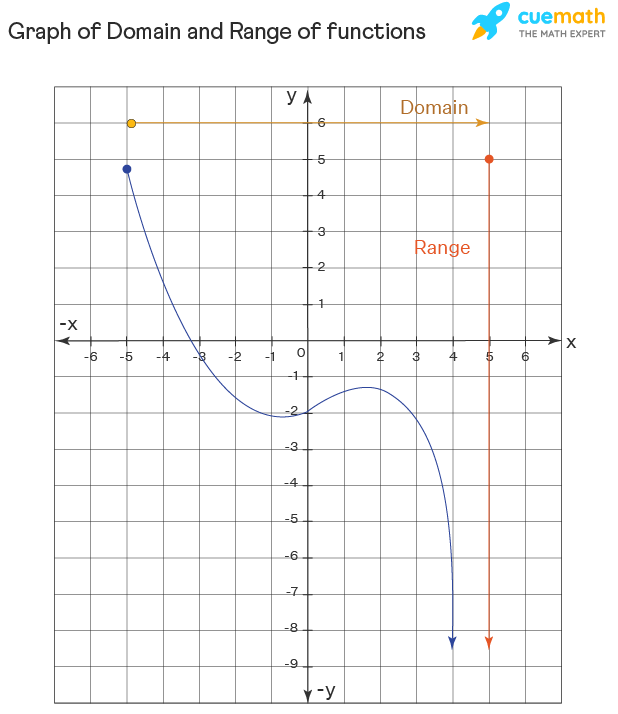
Again, get the real numbers for which we are getting a meaningful output.Do the inverse function by interchanging the x and y values.Domain is all the real numbers, except for which number we are not getting the meaningful output.Find any real number for x get a meaningful output.Use these steps, when you are searching for a detailed process to solve the domain & range. For example, if you draw the coordinates, the x values 2, 4, 9, 7 and 5 only have one associated output number each, and therefore, it's a function, and the found range of a function is verified.You can observe the simple steps through which we can know the domain and range of any real valued function. Once complete, observe the shape of the graph. Then, you move up or down the y-axis, depending on whether the y-coordinate is positive or negative.


When graphing, move left or right on the x-axis, depending on whether the x-coordinate is negative or positive. You may see a straight line, a curved line shaped like a "u" or "n" or something that looks like waves. This can help you see the shape of the function. To find the range of a function on a graph, mark (or plot) the domain (x) and range (y) coordinates you have on a piece of graph paper using small dots. Here are the steps for finding the range of a function using a graph: 1. Finding the range of a function with a graphĪ graph can provide a visual representation of the shape that a function takes, allowing you to see how y-coordinates interact with x-coordinates. Related: Financial Mathematics: Definition and Real-World Applications 2. With this example, the range is f(x) = all multiples of 10 ≥ 0.

So, you can write the range of the function as an equivalency. Because you can always sell more journals, you know the range can continually increase by intervals of 10. Knowing that you can't sell negative journals, you can determine the range of the function is never lower than zero. This supports the conclusion that the function is positive. The resulting graph is linear and trends upward. To double-check this information, you can draw the variables as ordered pairs on a graph. When applied, the y = f(x) formula shows a positive relationship between x and y for all the journal sales. Related: Understanding the Role of Mathematics in Physics (Plus Tips) 2. If you sell zero, 2, 4 or 10 journals, then your total sales are $0, $20, $40 and $100. Writing out the formula-where y = f(x)-can help you to determine some aspects of the relationship between your two variables.Įxample: If you're selling journals for $10 each, your total sales, f(x), is equal to the number of journals you sell, x, multiplied by 10. Below are steps you can use to find the range of a function algebraically: 1. These formulae can look different depending on what kind of interaction the values have. Finding the range of a function with a formulaĪ formula can represent how the variable x interacts with the variable y. You can find the range of a function in three ways: a formula, a graph or a relation. Finding the range of a function means finding all the possible values that y can be, based on x. For y, however, there are more possibilities.
Graph from domain and range calculator how to#
Related: Math Skills: Definition, Examples and How To Develop Them 3 ways to find the range of a functionįor x, in an ordered pair (x, y), it can only correspond to one y value.

Range: The range is a set of numbers that represent every potential value that y could have based on the function. The values of variables change, which you can represent as a set of values called the domain and range of a function:ĭomain: The domain of a function is a set of numbers representing every value that x can be. Related: 34 Careers Using Applied Mathematics (With Definitions) What is the range of a function? If x equals 2 in the equation y = x -1, then the value of y is 1: y = 2-1īut if x has a value of 10, then y would also change, to 9, or y=10-1 In this formula, y is a function of x, meaning that when the value of x changes, the value of y (or the range or dependent variable) changes as well. In a formula, you can represent a function as: A function is an applied mathematical term used to talk about the relationship between two variables.


 0 kommentar(er)
0 kommentar(er)
